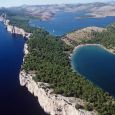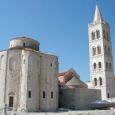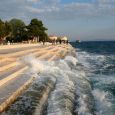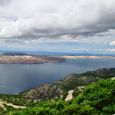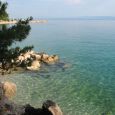Zadar
Advertisement
By Plain
A safe and expedient traffic of passengers and cargo is guaranteed by modern equipment, vehicles and devices, as well as a qualified and experienced staff all the year long, mostly due to the mild Mediterranean climate.
Open daily between 6 a.m. and 10 p.m. and longer if required, the airport offers service to passengers on home and international flights of Croatia Airlines, Adria Airways and several charter airlines. The Zadar Airport connects Zadar with Zagreb and via Zagreb and Ljubljana to all European and overseas destinations.
By Train
Zadar is connected with Zagreb (via Knin). In the full tourist season, there are also quite a few extra trains running. From Zagreb and from Zadar cars can be transported by train.
By Bus
The Adriatic Coastal Road and roads leading inland, connect Zadar with the neighbouring country of Bosnia and Herzegovina. The city is also connected by regular lines throughout the entire year with all of the most impotant tourist centres on the Adriatic Coast (with Sibenik, Split, Dubrovnik, Makarska, Rijeka and Pula) and with just about all of the larger cities in the continental part of the Croatia (Knin, Karlovac, Zagreb, Varazdin and Osijek) neighbouring countries of Bosnia and Herzegovina (Mostar, Sarajevo, Zenica, Tuzla), as well as international lines.
Advertisement
Kornati National Park
Kornati National Park (Nacionalni Park Kornati) is made up of 147 islands in the Zadar Archipelago. The main island in the park is Kornat Island which measures 25km / 15mi long and 2.5km / 1.5mi wide. The park was set up in 1980 as a measure to stop development of the islands and protect the marine life. Most of the islands within the park are uninhabited and fishing is prohibited. The islands, for the most part, are barren with little to no vegetation. Rolling dry hills rising out of the clear waters shape the landscape in Kornati National Park. The terrain is actually rugged with caves, cracks, and cliffs. The islands were once lush, and home to Roman villas, but there is no fresh water on the islands and the land was exploited during the Venetian rule and left desolate. Some of the islands still have Roman remains. Among the more interesting ruins are those of Roman villas and walls which run down the shorelines into the water, thought to have been a holding tank for fresh frish. The area is popular with yachters and scuba divers. Despite the barren landscape the park has a unique beauty and attracts many visitors.
Church of St Donat
The Church of St Donat (SV Donat) was built in the 9th Century and is one of the largest examples of Byzantine architecture in Dalmatia. It was originally named the Church of the Holy Trinity but was later changed and named for Bishop Donat. St Donat is one of the main architectural highlights of Zadar. This circular church is flanked by three circular apses. It was built on top of the old Roman forum and incorporated some of the old structure. Two pillars from the form are built into the church and the floor of the church was removed to show the stone work of the forum on the ground below. Many of the stones used to build the church of St Donat, were taken from the Roman forum.
Sea Gate
Zadar's famous Sea Gate (Morska Vrata), also known as the Gate of St Chrysogonus (Vrata Sv Krsevana), was designed by Michele Sanmichele in 1560. Sanmichele used an existing Roman arch as his base, which he recreated into the gate that stands today. On the sea side of the gate is a relief of the emblem of Venice, the Lion of St Mark's, and a memorial to sailors who fought and perished in the Battle of Lepanto. On the opposite side, the land side, is a commemorative plaque paying tribute to Pope Alexander III's visit to Zadar.
Pag
The island of Pag has been inhabited since the Neolithic Age. The history of the island involves the Liburnians who occupied the island in 1200 BC, the Romans who established a port here in the 1st Century, the Slavs in the 6th Century, and the Venetians in the 11th Century. One of the valued commodities on the island is the salt pans, which have historically been a source of conflict. The eastern end of Pag is a dry barren landscape, the coast facing the mainland is similar although more jagged and rugged, and the southwest is a little greener with olive trees and other harvestable plants. The main town on the island is also called Pag, followed by Novalja.
Nin
During Roman times the town of Nin was called Aenona. It was also one of the first Croat settlements in this area. In the 9th Century the Bishop created controversy in Nin by proposing the use of the Croatian language in the delivery of the liturgy at the local church. The Pope did not agree with this decision. The town was abandoned in the 12th Century do to a number of factors, including the difficulty with defending the town.
Modern day Nin has a beautiful old town with a number of attractions. The pre-Romanesque church of the Holy Cross (Sv Kriz) was built in typical Croatian style and is one of the highlights of the town. The Church of St Anselm, built in the 18th Century contains silver reliquaries dating to the 9th Century. Also of interest in town is the statue of Bishop Greogory of Nin by Croatian sculptor Ivan Mestrovic.
July - November
July - August -> 25(°C) - Summer
January - February -> 5(°C) - Spring
Advertisement

